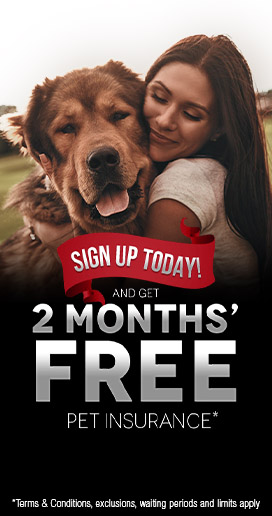Top 10 Medium Sized Dog Breeds That Don’t Shed
When buying a pet it’s always a good idea to consider ways to reduce additional constraints on your life. You can reduce financial shocks with things like selecting breeds with fewer genetic health issues and finding the best pet insurance for your situation, BUT you can also end up unexpectedly time-poor due to things like grooming and additional cleaning needed due to the extra-hair a high shedding dog creates. Additionally, considering a dogs shedding levels is one of the most important factors for pet owners with certain allergies.
First of all though, lets abolish the popular myth about all ‘non-shedding’ dogs. ALL dogs will shed; however, some breeds shed a lot less than others. So the term ‘low-shedding’ is really more accurate. Also, even many low-shedding dogs also possess double coats that actually trap the hair and require daily grooming to remove this hair that would normally fall to the floor in other breeds. In general, for good skin and coat care, your breed will require some coat maintenance and possibly daily/weekly brushing. To help you make an informed decision, below is a list of breeds and a rundown of the care needed for their coats.
The Top 10 Medium Sized, Low-Shedding Dog Breeds
Basenji
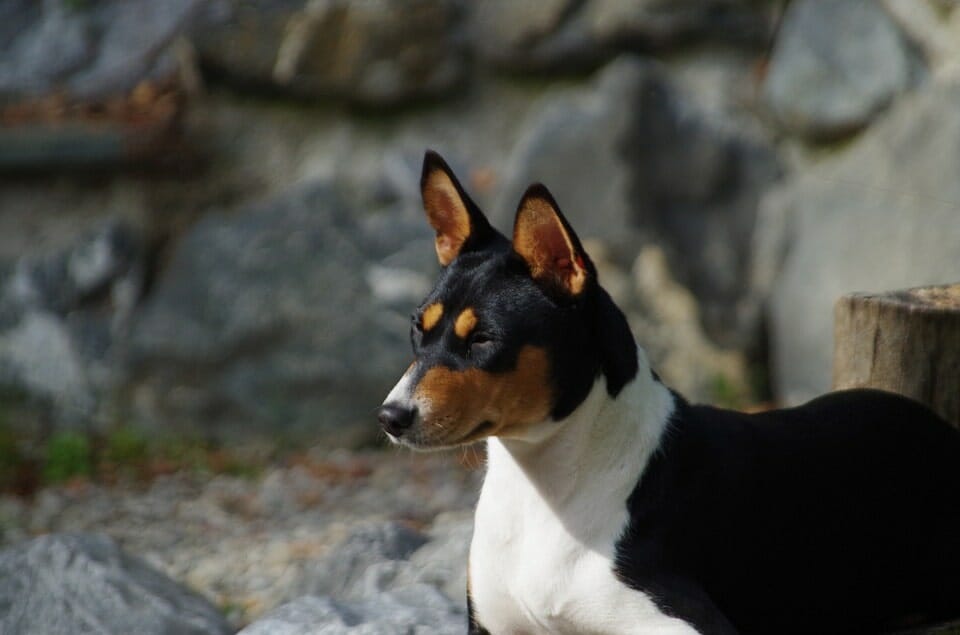 The Basenji has a punchy and loveable nature and is a master at keeping his coat clean and groomed. In saying this, they will require a weekly brush to remove dead hair. They are considered a typical low-shedding breed; however, don’t be fooled. The Basenji does shed, but the hair is so fine and short that the shedding is not easily noticeable compared with other dog breeds.
The Basenji has a punchy and loveable nature and is a master at keeping his coat clean and groomed. In saying this, they will require a weekly brush to remove dead hair. They are considered a typical low-shedding breed; however, don’t be fooled. The Basenji does shed, but the hair is so fine and short that the shedding is not easily noticeable compared with other dog breeds.
Kerry Blue Terrier
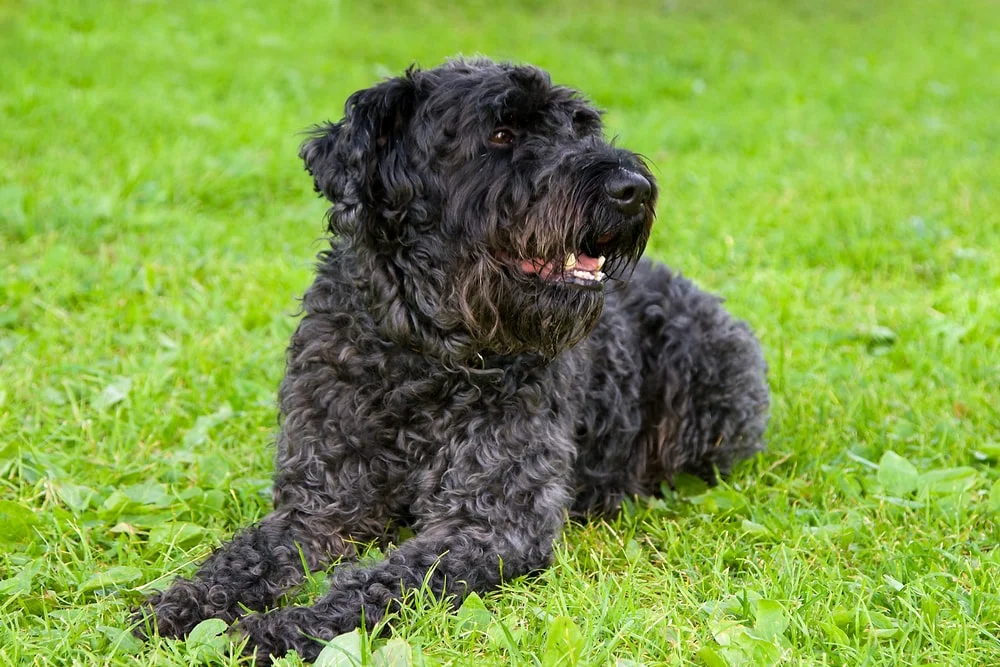 This feisty and friendly wee Terrier makes a wonderful addition to many homes. As a low-shedder, they are popular amongst those who dislike the sight of family fur around the home. But be warned; they do require daily brushing and a trip to an experienced and professional groomer for clipping every four to six weeks.
This feisty and friendly wee Terrier makes a wonderful addition to many homes. As a low-shedder, they are popular amongst those who dislike the sight of family fur around the home. But be warned; they do require daily brushing and a trip to an experienced and professional groomer for clipping every four to six weeks.
Labradoodle
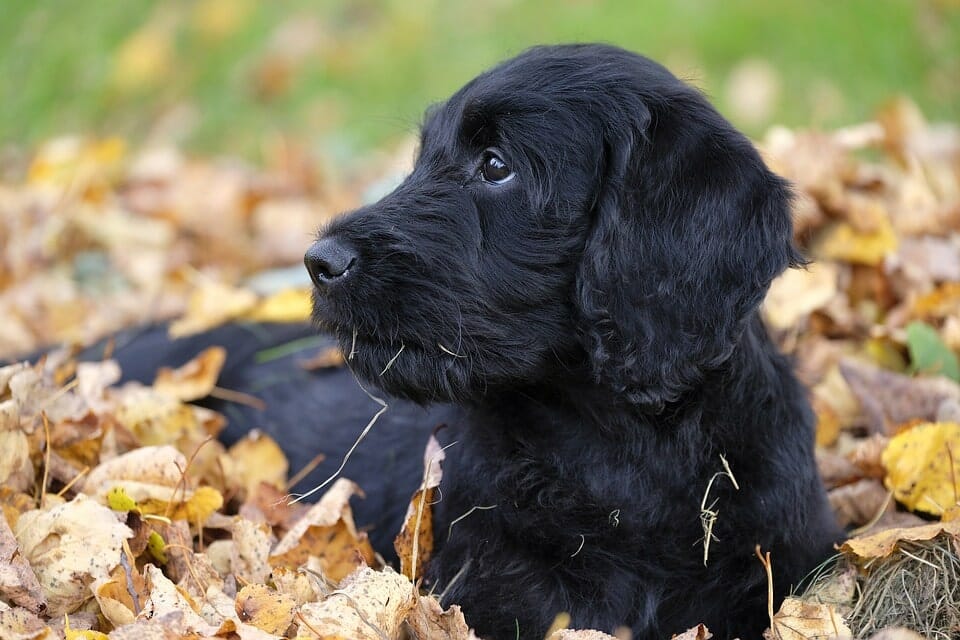 A popular and relatively new breed to the low-shedding category. They were originally developed as hypoallergenic guide dogs with a low-shedding coat. Like all dog breeds, the breeder is vitally important when purchasing a Labradoodle to check for quality with coat and breed. They have three different coats – Hair Coat, Wool Coat, and Fleece Coat. Fleece and Wool are the lowest of the shedding varieties for this breed. All coat types must be brushed weekly to promote healthy skin and remove dead and loose hair.
A popular and relatively new breed to the low-shedding category. They were originally developed as hypoallergenic guide dogs with a low-shedding coat. Like all dog breeds, the breeder is vitally important when purchasing a Labradoodle to check for quality with coat and breed. They have three different coats – Hair Coat, Wool Coat, and Fleece Coat. Fleece and Wool are the lowest of the shedding varieties for this breed. All coat types must be brushed weekly to promote healthy skin and remove dead and loose hair.
Irish Terrier
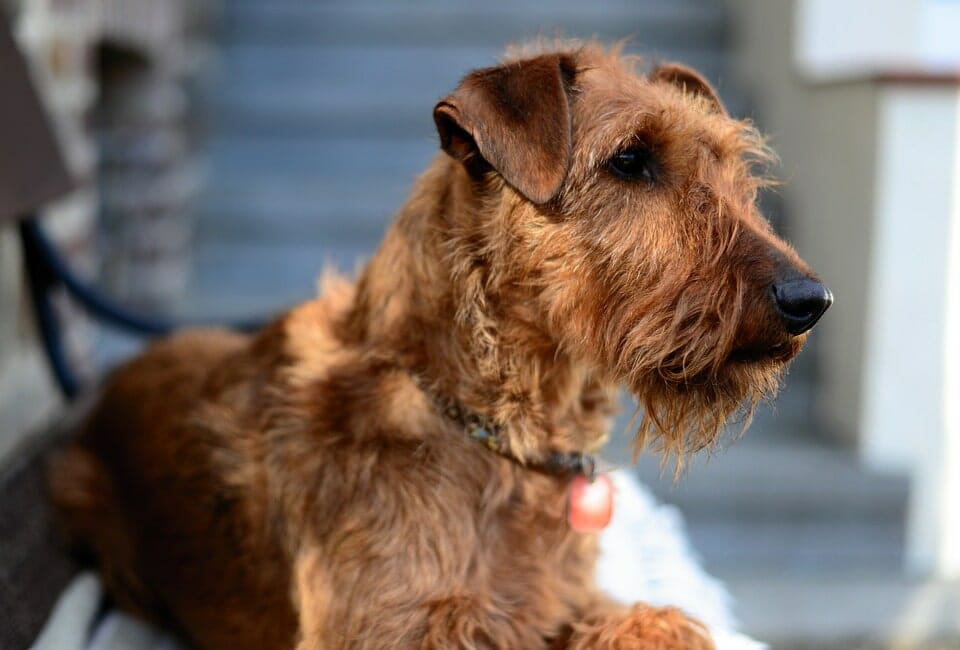 This tough terrier bares wiry and dense hair that comes in the form of a double coat. Like all double-coated breeds, the dead hair will become trapped in the undercoat, so the ‘shedding’ will need to be manually removed by brushing your Irish Terrier weekly. They will also require a professional pluck or strip every six months to remove loose hair and promote healthy hair growth.
This tough terrier bares wiry and dense hair that comes in the form of a double coat. Like all double-coated breeds, the dead hair will become trapped in the undercoat, so the ‘shedding’ will need to be manually removed by brushing your Irish Terrier weekly. They will also require a professional pluck or strip every six months to remove loose hair and promote healthy hair growth.
Puli
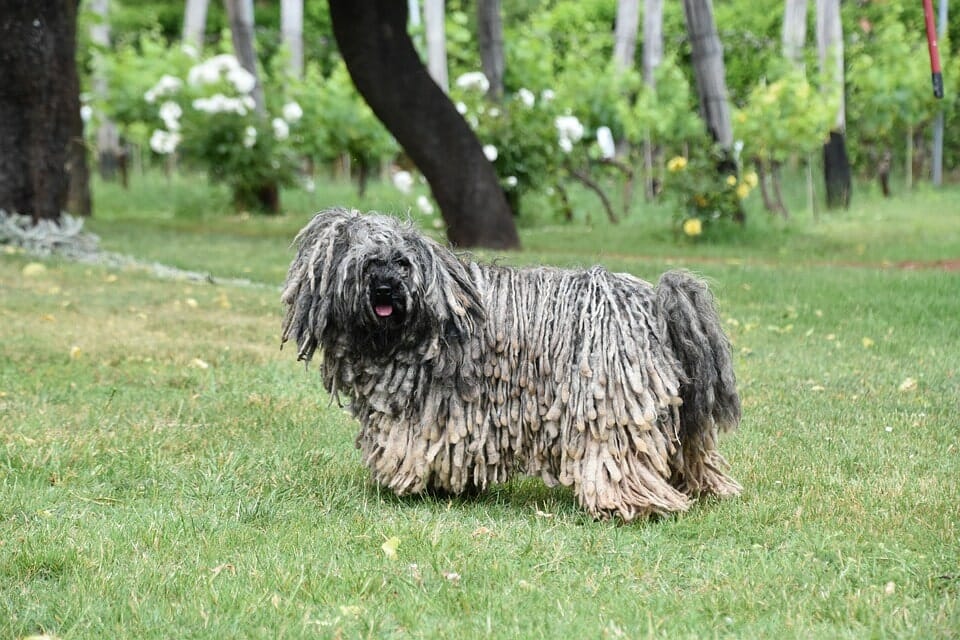 The Puli is certainly a head-turning with their long dreadlocks and wonderful nature. Their ‘cords,’ however, will need some attention as young dogs may need to help the cords form by separating them until the adult coat appears. When still fluffy; the coat will need to be brushed regularly to remove dirt and matts. The formed corded coat will not need brushing, but it will need to be separated and cleaned. Ask for advice from your professional breeder about coat care with this specific breed.
The Puli is certainly a head-turning with their long dreadlocks and wonderful nature. Their ‘cords,’ however, will need some attention as young dogs may need to help the cords form by separating them until the adult coat appears. When still fluffy; the coat will need to be brushed regularly to remove dirt and matts. The formed corded coat will not need brushing, but it will need to be separated and cleaned. Ask for advice from your professional breeder about coat care with this specific breed.
Standard Schnauzer
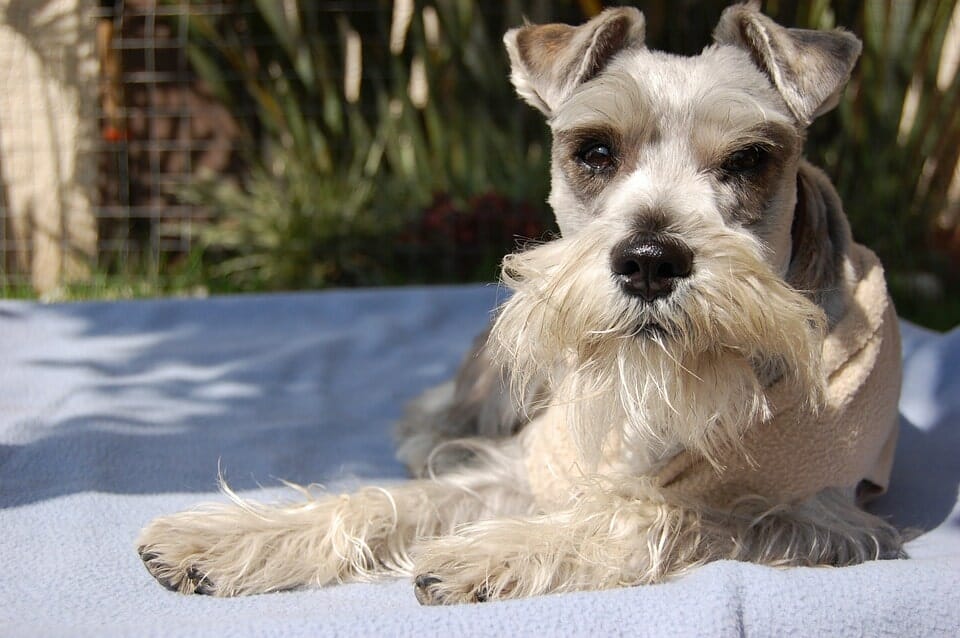 This popular breed is also a wonder when it comes to shedding. Having a double coat, the wiry exterior will help trap the loose hairs of the soft undercoat. They will require a good amount of grooming to keep them looking their best and also free from painful mating. Their beard and legs will need daily grooming and the coat will require hand stripping every six months. Remembering that if you choose to clip instead of strip your pup will shed more.
This popular breed is also a wonder when it comes to shedding. Having a double coat, the wiry exterior will help trap the loose hairs of the soft undercoat. They will require a good amount of grooming to keep them looking their best and also free from painful mating. Their beard and legs will need daily grooming and the coat will require hand stripping every six months. Remembering that if you choose to clip instead of strip your pup will shed more.
Tibetan Terrier
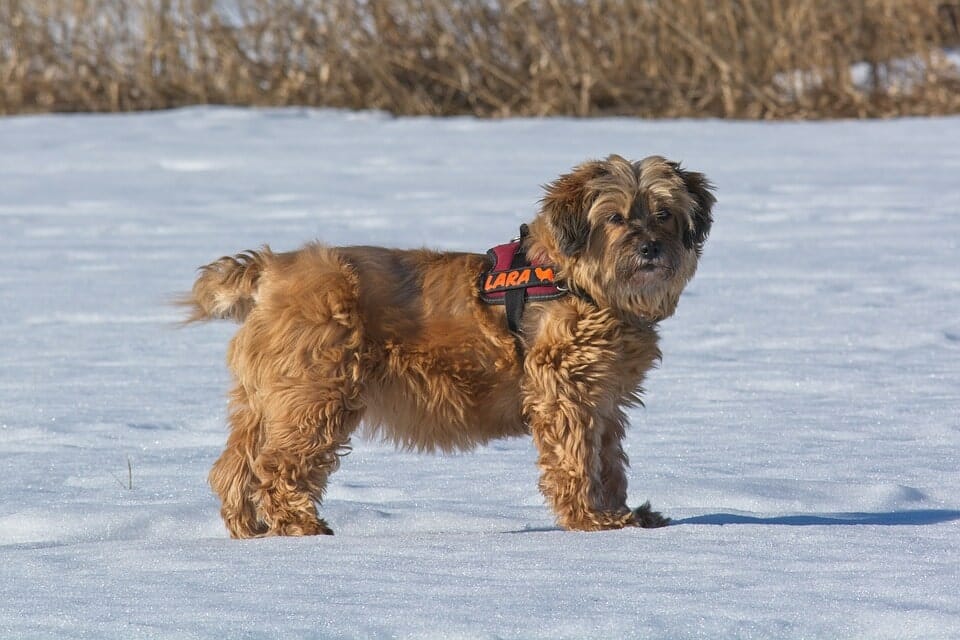 This precious canine companion has a lovely, long, and beautiful coat. The hair can be wavy or straight and will need daily grooming to prevent tangles and matts from forming. This breed takes a lot of time and energy to keep them looking beautiful. If you do not have the time to dedicate to this breed on a daily basis it’s best to look for another low-shedding breed. Having a double coat is important to ensure you reach the undercoat to remove tangles. Many Tibetan Terrier owners enlist the expertise of a professional groomer to help.
This precious canine companion has a lovely, long, and beautiful coat. The hair can be wavy or straight and will need daily grooming to prevent tangles and matts from forming. This breed takes a lot of time and energy to keep them looking beautiful. If you do not have the time to dedicate to this breed on a daily basis it’s best to look for another low-shedding breed. Having a double coat is important to ensure you reach the undercoat to remove tangles. Many Tibetan Terrier owners enlist the expertise of a professional groomer to help.
Welsh Terrier
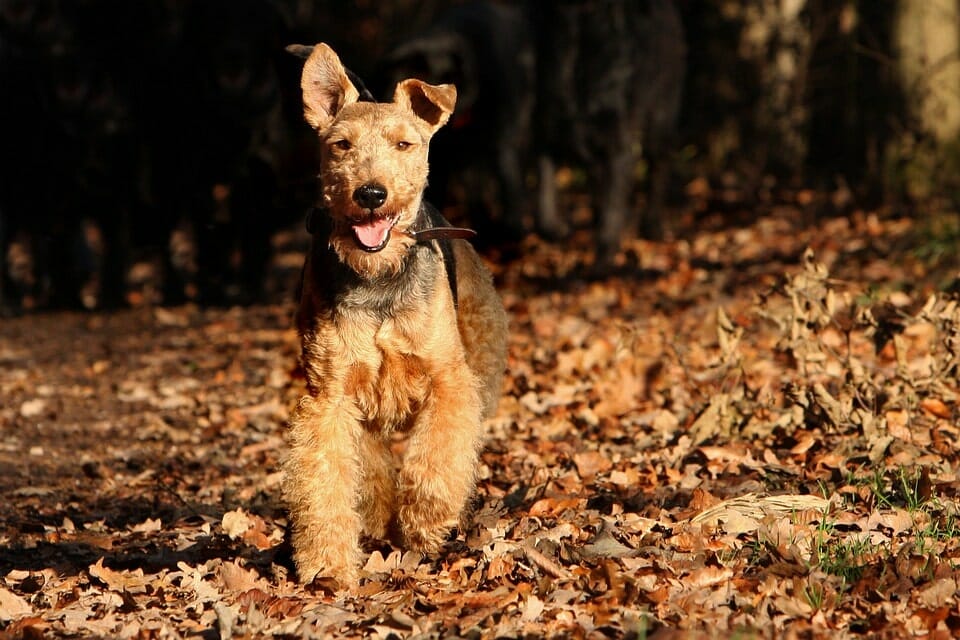 This breed is well known for its funny antics and lively characteristics and, like most low-shedding breeds, will require a fair amount of grooming attention. They need to be brushed three times or more per week unless they are clipped. Remember that clipping will make your chosen breed shed slightly more. Some owners opt out of clipping and have their dog’s coats professionally stripped every six months to remove dead hair.
This breed is well known for its funny antics and lively characteristics and, like most low-shedding breeds, will require a fair amount of grooming attention. They need to be brushed three times or more per week unless they are clipped. Remember that clipping will make your chosen breed shed slightly more. Some owners opt out of clipping and have their dog’s coats professionally stripped every six months to remove dead hair.
Soft-Coated Wheaten Terrier
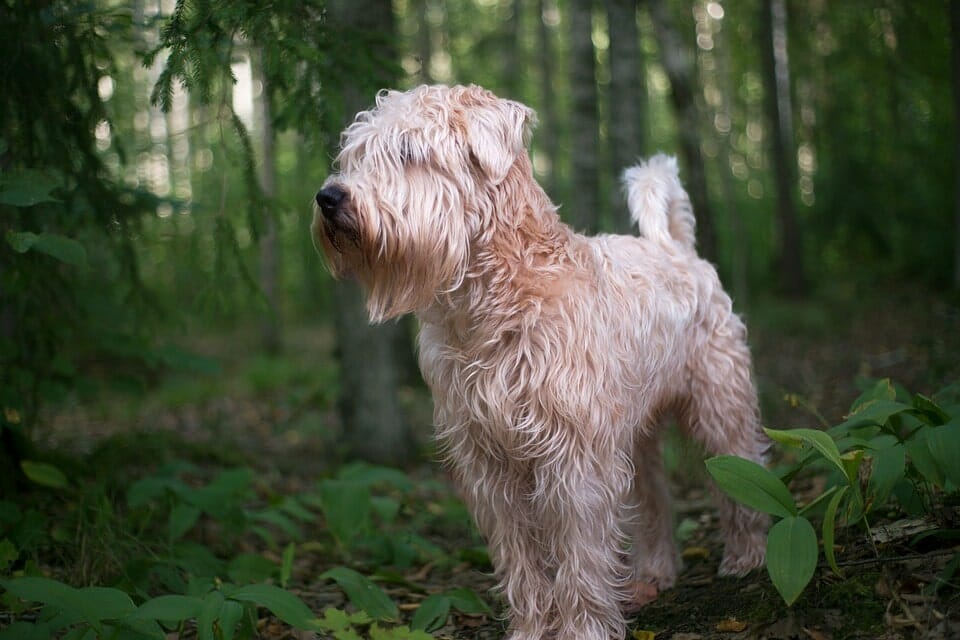 The stunning and silky coat of this adorable breed is certainly a head-turner. Only having a single coat grooming isn’t too difficult; however, they will require daily grooming to prevent matts and tangles from forming. Some owners prefer the scruffier look of their adorable pooches, meaning you can reduce this to three times per week. Some owners opt to have their dogs taken to a groomer to help with the trimming and clipping.
The stunning and silky coat of this adorable breed is certainly a head-turner. Only having a single coat grooming isn’t too difficult; however, they will require daily grooming to prevent matts and tangles from forming. Some owners prefer the scruffier look of their adorable pooches, meaning you can reduce this to three times per week. Some owners opt to have their dogs taken to a groomer to help with the trimming and clipping.
Whippet
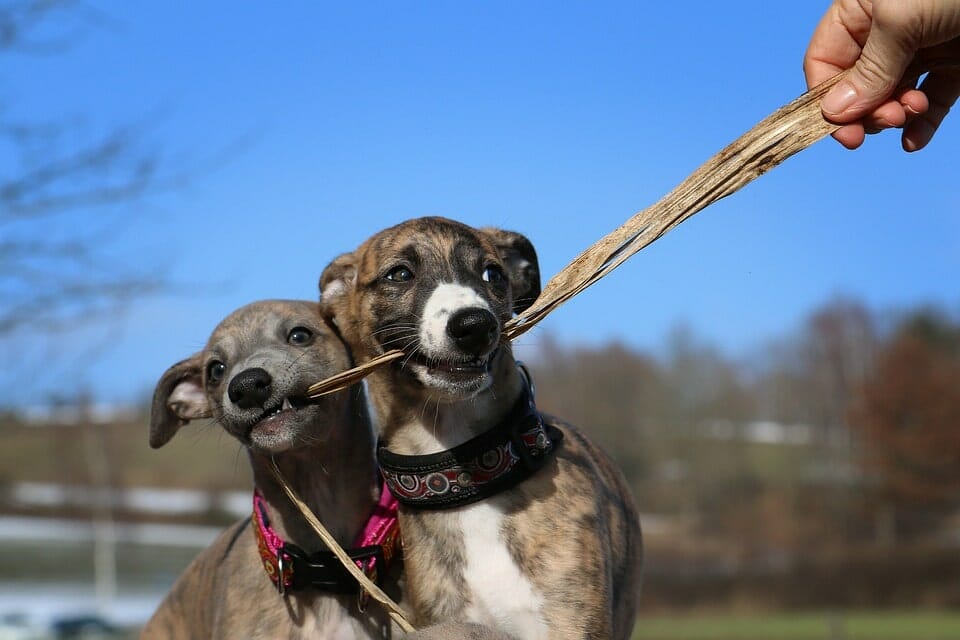 The Whippet is a popular and energetic dog that is a favourite amongst low-shedding owners. They are a wash-and-wear breed, meaning they only require minimal grooming to keep them in tip-top shape. A weekly brush will do the job to help remove dead or loose hairs. Care needs to be taken to keep your Whippet’s skin in good condition as the coat is so short and thin that it is not uncommon for their skin to have small injuries and tears.
The Whippet is a popular and energetic dog that is a favourite amongst low-shedding owners. They are a wash-and-wear breed, meaning they only require minimal grooming to keep them in tip-top shape. A weekly brush will do the job to help remove dead or loose hairs. Care needs to be taken to keep your Whippet’s skin in good condition as the coat is so short and thin that it is not uncommon for their skin to have small injuries and tears.
Hypoallergenic Dog Breeds?
When it comes to allergies, it is essential to check with your doctor exactly what you are allergic to. Some pet owners are allergic to dander (skin) and even dog saliva or urine, so purchasing a pup with limited shedding issues may not stop your allergies. It’s best to get a clear picture of your exact allergies. Also, visit the breeder and have as much interaction with your chosen breed as possible before purchasing. Take note of your reactions and determine if your allergies can cope with this constant contact.
So there you have it. 10 of the lowest shedding, medium sized dog breeds to consider. We hope this article has helped you to find the perfect four-legged companion. Please feel free to share this article and subscribe to our newsletter for more helpful canine articles. You’ll also find more useful information on pet allergy sources, prevention, and treatment in this article from the Australasian Society of Clinical Immunology.
This article was brought to you by Pet Insurance Australia, providing the best possible pet cover through our cat insurance and dog insurance plans.
Also see:
small low shedding dog breeds
popular low shedding dog breeds
Large, low shedding dog breeds
understanding dog breeds
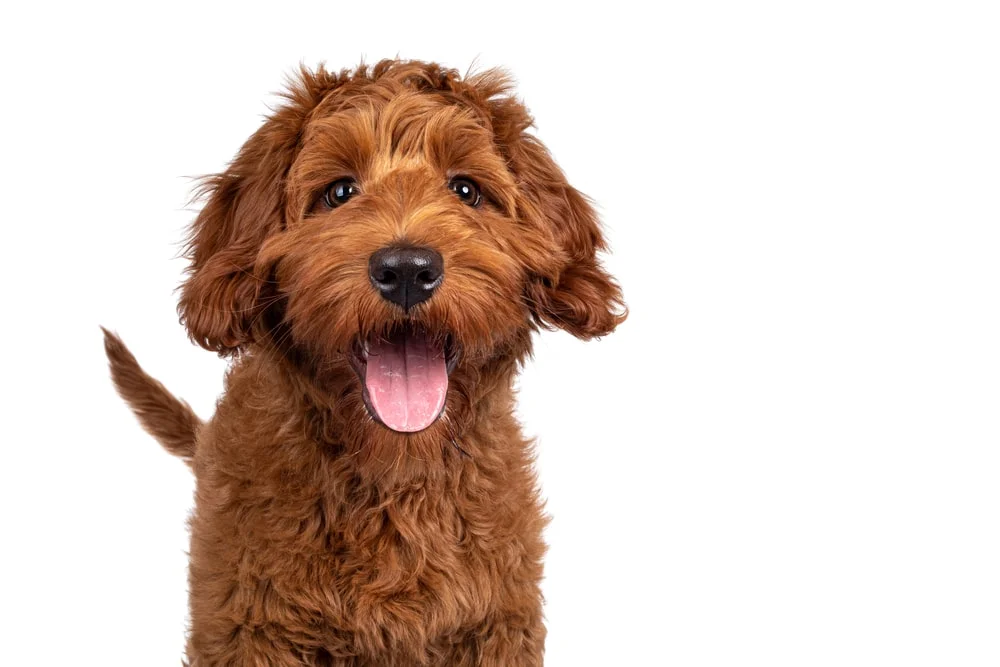

 The Basenji has a punchy and loveable nature and is a master at keeping his coat clean and groomed. In saying this, they will require a weekly brush to remove dead hair. They are considered a typical low-shedding breed; however, don’t be fooled. The
The Basenji has a punchy and loveable nature and is a master at keeping his coat clean and groomed. In saying this, they will require a weekly brush to remove dead hair. They are considered a typical low-shedding breed; however, don’t be fooled. The  This feisty and friendly wee Terrier makes a wonderful addition to many homes. As a low-shedder, they are popular amongst those who dislike the sight of family fur around the home. But be warned; they do require daily brushing and a trip to an experienced and professional groomer for clipping every four to six weeks.
This feisty and friendly wee Terrier makes a wonderful addition to many homes. As a low-shedder, they are popular amongst those who dislike the sight of family fur around the home. But be warned; they do require daily brushing and a trip to an experienced and professional groomer for clipping every four to six weeks. A popular and relatively new breed to the low-shedding category. They were originally developed as hypoallergenic guide dogs with a low-shedding coat. Like all dog breeds, the breeder is vitally important when purchasing a Labradoodle to check for quality with coat and breed. They have three different coats – Hair Coat, Wool Coat, and Fleece Coat. Fleece and Wool are the lowest of the shedding varieties for this breed. All coat types must be brushed weekly to promote healthy skin and remove dead and loose hair.
A popular and relatively new breed to the low-shedding category. They were originally developed as hypoallergenic guide dogs with a low-shedding coat. Like all dog breeds, the breeder is vitally important when purchasing a Labradoodle to check for quality with coat and breed. They have three different coats – Hair Coat, Wool Coat, and Fleece Coat. Fleece and Wool are the lowest of the shedding varieties for this breed. All coat types must be brushed weekly to promote healthy skin and remove dead and loose hair. This tough terrier bares wiry and dense hair that comes in the form of a double coat. Like all double-coated breeds, the dead hair will become trapped in the undercoat, so the ‘shedding’ will need to be manually removed by brushing your Irish Terrier weekly. They will also require a professional pluck or strip every six months to remove loose hair and promote healthy hair growth.
This tough terrier bares wiry and dense hair that comes in the form of a double coat. Like all double-coated breeds, the dead hair will become trapped in the undercoat, so the ‘shedding’ will need to be manually removed by brushing your Irish Terrier weekly. They will also require a professional pluck or strip every six months to remove loose hair and promote healthy hair growth. The Puli is certainly a head-turning with their long dreadlocks and wonderful nature. Their ‘cords,’ however, will need some attention as young dogs may need to help the cords form by separating them until the adult coat appears. When still fluffy; the coat will need to be brushed regularly to remove dirt and matts. The formed corded coat will not need brushing, but it will need to be separated and cleaned. Ask for advice from your professional breeder about coat care with this specific breed.
The Puli is certainly a head-turning with their long dreadlocks and wonderful nature. Their ‘cords,’ however, will need some attention as young dogs may need to help the cords form by separating them until the adult coat appears. When still fluffy; the coat will need to be brushed regularly to remove dirt and matts. The formed corded coat will not need brushing, but it will need to be separated and cleaned. Ask for advice from your professional breeder about coat care with this specific breed. This popular breed is also a wonder when it comes to shedding. Having a double coat, the wiry exterior will help trap the loose hairs of the soft undercoat. They will require a good amount of grooming to keep them looking their best and also free from painful mating. Their beard and legs will need daily grooming and the coat will require hand stripping every six months. Remembering that if you choose to clip instead of strip your pup will shed more.
This popular breed is also a wonder when it comes to shedding. Having a double coat, the wiry exterior will help trap the loose hairs of the soft undercoat. They will require a good amount of grooming to keep them looking their best and also free from painful mating. Their beard and legs will need daily grooming and the coat will require hand stripping every six months. Remembering that if you choose to clip instead of strip your pup will shed more. This precious canine companion has a lovely, long, and beautiful coat. The hair can be wavy or straight and will need daily grooming to prevent tangles and matts from forming. This breed takes a lot of time and energy to keep them looking beautiful. If you do not have the time to dedicate to this breed on a daily basis it’s best to look for another low-shedding breed. Having a double coat is important to ensure you reach the undercoat to remove tangles. Many Tibetan Terrier owners enlist the expertise of a professional groomer to help.
This precious canine companion has a lovely, long, and beautiful coat. The hair can be wavy or straight and will need daily grooming to prevent tangles and matts from forming. This breed takes a lot of time and energy to keep them looking beautiful. If you do not have the time to dedicate to this breed on a daily basis it’s best to look for another low-shedding breed. Having a double coat is important to ensure you reach the undercoat to remove tangles. Many Tibetan Terrier owners enlist the expertise of a professional groomer to help. This breed is well known for its funny antics and lively characteristics and, like most low-shedding breeds, will require a fair amount of grooming attention. They need to be brushed three times or more per week unless they are clipped. Remember that clipping will make your chosen breed shed slightly more. Some owners opt out of clipping and have their dog’s coats professionally stripped every six months to remove dead hair.
This breed is well known for its funny antics and lively characteristics and, like most low-shedding breeds, will require a fair amount of grooming attention. They need to be brushed three times or more per week unless they are clipped. Remember that clipping will make your chosen breed shed slightly more. Some owners opt out of clipping and have their dog’s coats professionally stripped every six months to remove dead hair. The stunning and silky coat of this adorable breed is certainly a head-turner. Only having a single coat grooming isn’t too difficult; however, they will require daily grooming to prevent matts and tangles from forming. Some owners prefer the scruffier look of their adorable pooches, meaning you can reduce this to three times per week. Some owners opt to have their dogs taken to a groomer to help with the trimming and clipping.
The stunning and silky coat of this adorable breed is certainly a head-turner. Only having a single coat grooming isn’t too difficult; however, they will require daily grooming to prevent matts and tangles from forming. Some owners prefer the scruffier look of their adorable pooches, meaning you can reduce this to three times per week. Some owners opt to have their dogs taken to a groomer to help with the trimming and clipping. The Whippet is a popular and energetic dog that is a favourite amongst low-shedding owners. They are a wash-and-wear breed, meaning they only require minimal grooming to keep them in tip-top shape. A weekly brush will do the job to help remove dead or loose hairs. Care needs to be taken to keep your Whippet’s skin in good condition as the coat is so short and thin that it is not uncommon for their skin to have small injuries and tears.
The Whippet is a popular and energetic dog that is a favourite amongst low-shedding owners. They are a wash-and-wear breed, meaning they only require minimal grooming to keep them in tip-top shape. A weekly brush will do the job to help remove dead or loose hairs. Care needs to be taken to keep your Whippet’s skin in good condition as the coat is so short and thin that it is not uncommon for their skin to have small injuries and tears.
